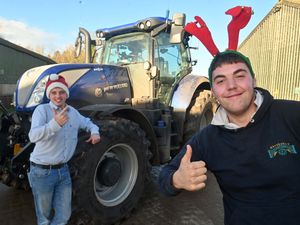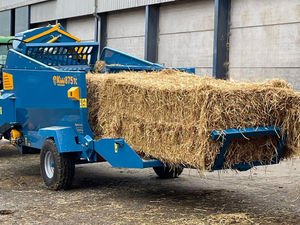Knowing the score helps improve the breed
The National Bovine Data Centre’s highly-experienced team of classifiers work throughout the year, typically inspecting 120,000 Holsteins in over 2,000 herds across the UK.
The service aims to independently assess the anatomical strengths and weaknesses of the herd, with the information collected aiding breeders with mating decisions.
This year so far, just over 100,000 Holsteins inspections have taken place, consisting of 50,165 heifers with an average score of 80.95 and 50,305 cows with an average score of 86.84. Some 7,381 heifers have scored VG (14.7 per cent of heifers) and 13,524 cows have scored EX (27 per cent of cows).
One heifer has scored the maximum 89 points – Wyndford Doorman Atlee 2, who was bought at the Wyndford dispersal sale last year by David Jones of the Wiltor prefix. Sixty-five heifers scored VG88.
The three existing EX97 cows in the Herd Book have all been rescored this year, with Richaven Raider Squaw scoring 97 for the third time and both Warnelview Final Cut Nita and Peak Goldwyn Rhapsody scoring 97 for the second time.
Eighteen cows have scored EX96, of which 10 were first-time EX96-point cows. These were; Forte CS Elegance, Whinchat Shottle Savoire Fare, Nobold Stormatre Helene, Rigefield Shottle Rosie, Matfield Jasper 19, Wilsbro Shottle J Fawn, Halloverhill Rosette 87, Drointon Jeeves Edna, Richaven Shottle Adrienne and Steveacre Seaver Daisy.
Comparison with the overall classification score distribution for pedigree Holstein heifers classified in 2013 and 2017 shows an increase in high-scoring heifers. In the case of VG89-point heifers, these have remained stable at 0.01 per cent of the heifers scored in a year. VG88-point heifers have seen a 0.02 per cent increase over the past five years, VG87-point heifers a 0.4 per cent increase, VG86-point heifers a 1.48 per cent increase and VG85-point heifers a 2.8 per cent increase over the past five years.
There has also been a reduction in the proportion of animals scoring 81 points and below. The distribution of scores was therefore not radically different in 2017 to five years earlier in 2013. The average score has only moved 0.6 points from 80.5 in 2013 to 81.1 in 2017.
The goal of type classification is to monitor and improve the conformation of the national Holstein herd by assessing the strengths – and sometimes more importantly, the weaknesses – that can then be addressed via corrective breeding.
Jess Edwards is research and breed development co-ordinator at the National Bovine Data Centre, a division of Holstein UK, and a 2016 Harper Adams graduate





